My Google RESTAURANT Map of a Japanese journey in style
Gourmet (Michelin) restaurants Japan: “Second Golden Triangle” & 3 rural additions:
This is the last part of my mini-series about a three-week trip to Japan (made before Corona). In the following, I will inform you about types of restaurants you find in the Land of the Rising Sun plus where to go for gourmet (Michelin) dining spots. While my first post was about the most perfect Japan itinerary, I dealt in the second with the topic of luxury accommodation in this country. In the third one, I went into how to find and reserve Japanese fine dining places. Why, you may ask. Because Japan is no easy place for fine dining lovers from oversea in search of suitable gourmet restaurants.
Next on my blog you will find two more blogposts about this fascinating land. I would like to provide inspiration for a well-earned journey of a lifetime once you can travel again! First, I will let you know how it is staying at a luxury ryokan (Japanese guesthouse).
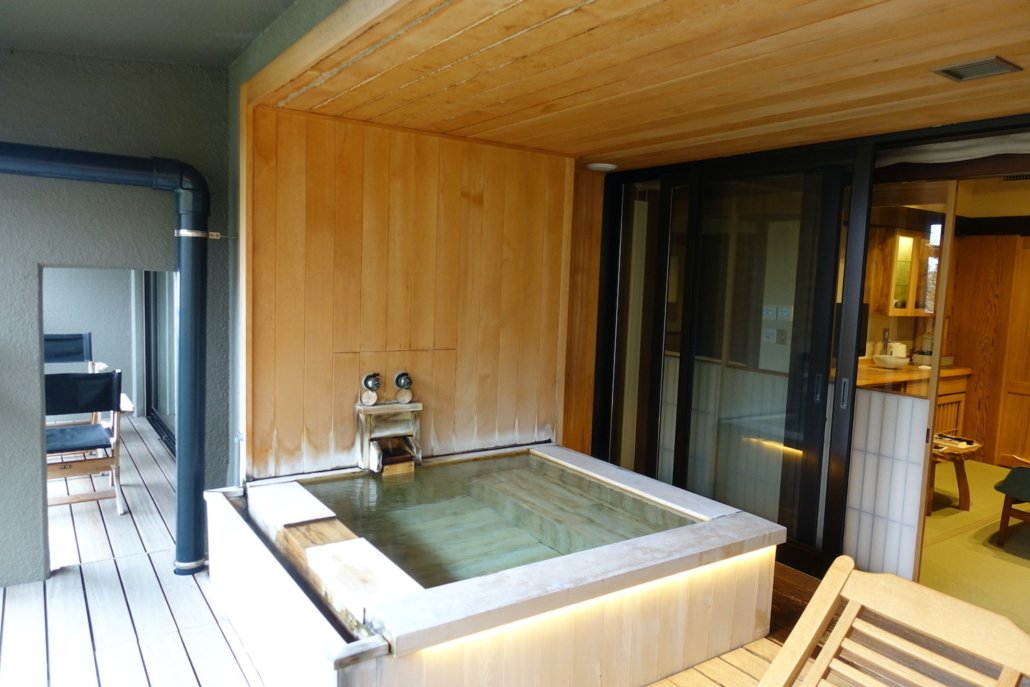
Second, I will go into two off the beaten path destinations in Japan, Kiso Valley and Yakushima Island.

Before coming to the topic of this post, I want to draw your attention to my Google Map of Japan.
My Google Map of our Japan journey in style
For readers that are new to my blog, I created a Google Map of the trip across the land of the rising sun. It includes the route, the activities and every single (luxury) hotel and (gourmet) dining spot my husband and I went to. And it comes with short descriptions and pictures of everything.
As to the itinerary, we chose one called “Second Golden Triangle”. This means the “First Golden Triangle of Tokyo – Kyoto – Osaka” complemented with Kanazawa and Takayama, located in the Japanese Alps. As this is quite a common tour with a focus more on urban places, we made it a bit deeper and less city-related. And we did this by adding three more, mainly rural, spots: Hakone near Tokyo (for Mt. Fuji views), Kiso Valley (for historic postal towns) and Yakushima Island (for natural wonders).
But now to the focus of my current blogpost, an overview on some relevant restaurant types in Japan along with our choice of fine (and also some casual) dining spots in Nippon (another name for Japan, it means the origin of the sun).
Restaurant types in Japan & our choice of gourmet (Michelin) spots
As you might know, Japanese restaurants specialize in a particular food, i.e. sushi, noodles or tempura. I suggest that you think first about what kind of eateries you want to try before looking for specific dining-spots in the respective category.
Here you find a list of common restaurant types in Japan, accompanied by the fine dining places my husband and I chose for our culinary adventures here.
1. Kaiseki restaurants
Kaiseki or Kaiseki Ryori is a traditional Japanese multi-course dinner served at high-end restaurants or inns. Originally, it was a formal meal as part of the tea ceremony. Nowadays, Japanese people have it only on special occasions just as birthdays or festivals.
The food is (ultra-)seasonal and is left natural. Chefs make sure that guests can enjoy the inherent flavor of the ingredients. They even use leaves and twigs to underline the natural character of the products.
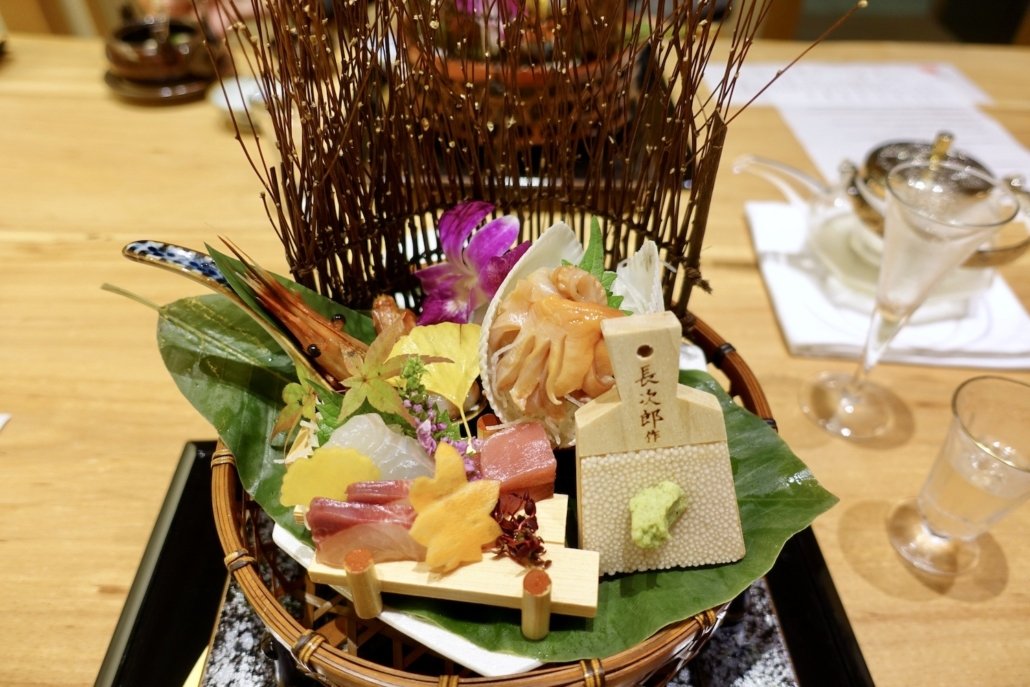
And often they also make references to past or coming seasons and events.
Kaiseki dinners are often part of a stay at a ryokan (traditional Japan guesthouse). We had a truly memorable Kaiseki dinner at Hakone, at a luxury ryokan (Madoka no Mori).

Find more information about staying at that sort of lodging, a must-do for every Japan traveler, soon on my blog.
2. Sushi restaurants
I think all of us are familiar with sushi. It is almost synonymous with what westerners understand by Japanese food. Sushi in Japan is different from its westernized version overseas. The variety is much bigger and the way it is served is different.
At a high-end sushi restaurant you receive one piece after the other. And each is ready to eat in one bite without adding any condiments. The sushi master has seasoned it already to perfection. And you may eat it by using your hands or chopsticks – whatever suites you. Usually, ginger is provided to eat between orders as a palate cleanser.
And be prepared to dig deep into your pockets if you opt for an upscale sushi restaurant! This was no different at Gion Sushi Tadayasu in Kyoto
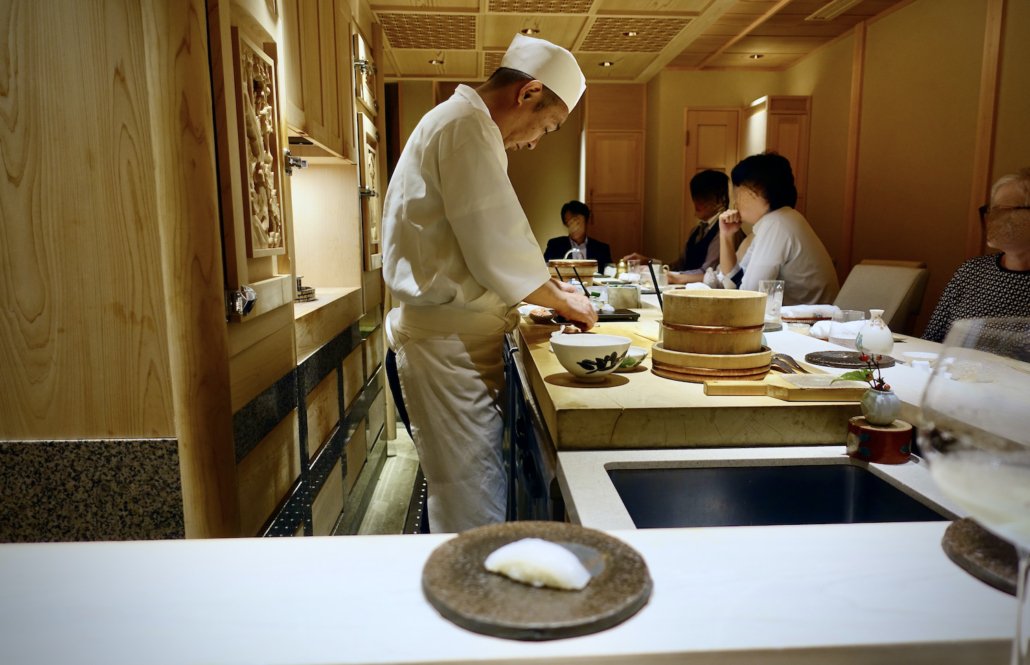
where we had the most memorable sushi dinner of our lives. The one-star Michelin sushi master prepared twenty-five small dishes

whereof twenty were sushi (all nigiri with one exception). As my husband and I wanted to try more than one premium sushi restaurant, we also dined at Sushi Harumi in Tokyo-Ginza.

Here we received a fine mix of (nigiri) sushi and other food. And it was reasonably priced, also due to the smaller number of sushi courses.
3. Izakaya restaurants
An izakaya is a casual Japanese-style pub where you get alcoholic drinks and food. And instead of ordering one dish per person, you go for a number of small plates for the table to share. Basically, It is some kind of a Japanese tapas-style eatery.
In terms of food you get edamame, yakitori (grilled meat on sticks), tamagoyaki (fluffy Japanese-style omelet), karaage (Japanese-style fried chicken), sashimi, grilled fish, french fries and salads amongst other items.
On our three-week trip we had one dinner at an izakaya place, and this in Kanazawa at Plat Home.

Here in this modern eatery they serve tasty creations in a relaxed ambiance.
4. Shabu Shabu & Sukiyaki restaurants
While both are made in hot pots (called nabe), only Shabu Shabu qualifies as hot pot dish. Guests cook raw ingredients just as sliced meat and bite-sized vegetables in a boiling pot of broth. The latter is only slightly flavored with kombu seaweed and dashi soup stock.

After cooking you dip the pieces in ponzu or sesame sauce.
As to Sukiyaki, you cook the same ingredients in a hot pot as well. However, you find in here more a sauce than a broth. You make it with soy sauce, mirin (Japanese rice wine) and sugar. Its flavor is sweeter and more pronounced than it is the case with Shabu Shabu.

Before eating you dip the ingredients in raw beaten egg. So the bites become richer and the sweetness is less accentuated.
On our Japanese journey, my husband and I had the chance to try out both dishes at the fabulous ryokan Takimi Onsen Inn in the Kiso Valley.
5. Tempura restaurants
Tempura is a typical Japanese dish where you dip food (slices or strips of seafood, meat and vegetables) in a batter and deep-fry it in hot oil. This gives the ingredients a crispy, flaky finish. Tempura is a ubiquitous dish in many Japanese restaurants yet there are also tempura eateries serving only this kind of food.
You even find Michelin starred tempura restaurants in Japan! In Tokyo there is quite a number of such establishments. We opted for the one-star Michelin Tempura Shimomura in Ueno.
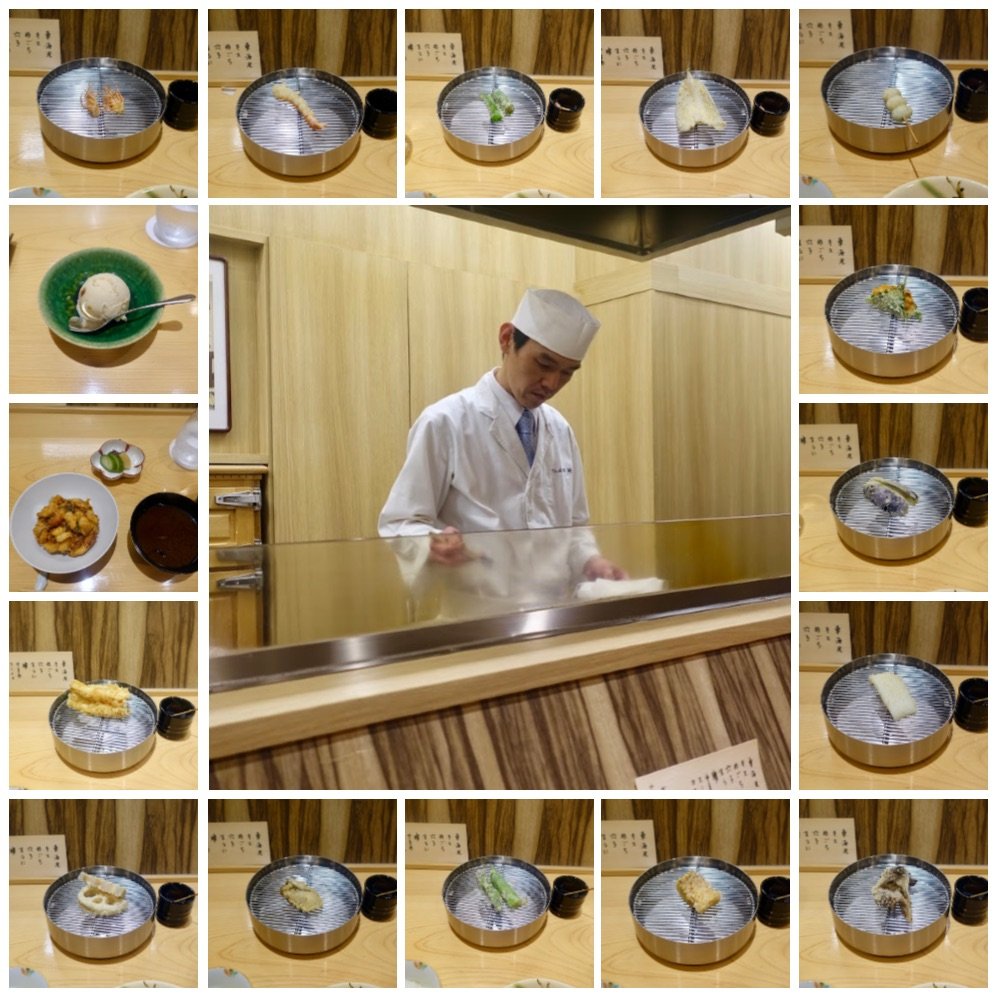
It was a great choice and offered value for money, too! We liked the high quality Sashimi seafood and the vegetables that the chef fried in a light, thin batter.
6. Washoku restaurants
Washoku is traditional Japanese cuisine. It is a simple preparation of rice and side dishes made with a variety of seasonal ingredients. From what I understand, it has similarities to Kaiseki meals, however it is not that elaborated. And it takes place in a more casual ambiance.
We had one such meal and this at Chisou Inaseya in Kyoto, a restaurant that specializes in chicken. We had ordered the chef’s omakase paired with Sake.

The combination of simple yet refined dishes complemented with sake was a mind opening culinary experience!
7. Yakiniku restaurants
Yakiniku means grilled meat and seems to have its origins in the Korean cuisine. Here guests order raw meat that they prepare on a grill that is built into the table.
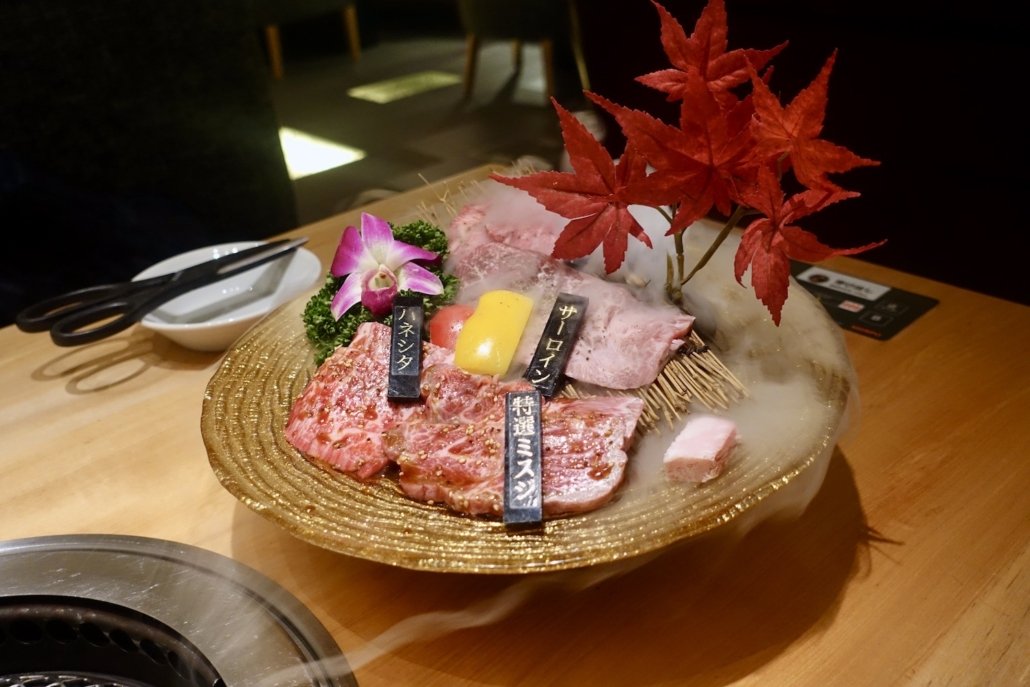
Before eating, you dip the ingredients in sauces (tare). And you pair the meat with Korean side dishes just as kimchi (fermented vegetables) and rice.
My husband and I gave this Japanese barbecue a shot in Tokyo-Ginza at Yakiniku Excellent Ginza-ten. It is quite a chic establishment with friendly servers (who help foreigners) and we liked what we got.
8. Japanese-European (Michelin) fine dining restaurants
Here we could draw from the full offer of high-end Japanese cuisine with European influences. We had lots of mind-boggling culinary experiences and insights!
8.1. Japanese-French cuisine
We had this kind of cuisine on four occasions, and all the places were superb, each on its own way! First, I have to name a really hot dining spot, the Michelin two-star La Cime in Osaka. It also ranks as number 93 among The World’s Best Restaurants by San Pellegrino.

Here the chef celebrates an exceptional contemporary French cuisine in a modern setting.
Then we indulged in a delightful multi-course menu with fantastic wine pairing and outstanding service at Gion Roiro in Kyoto (Michelin one-star in 2020).

A highlight was also the dinner at Le Grill Dominique Bouchet in Kanazawa

where we had well made classic French cuisine with local produce. This is an affiliate of a one-star Michelin chef in France who also oversees a one-star establishment in Tokyo.
Last but not least, we enjoyed a fabulous meal at Okas at Hotel Sankara on Yakushima Island.
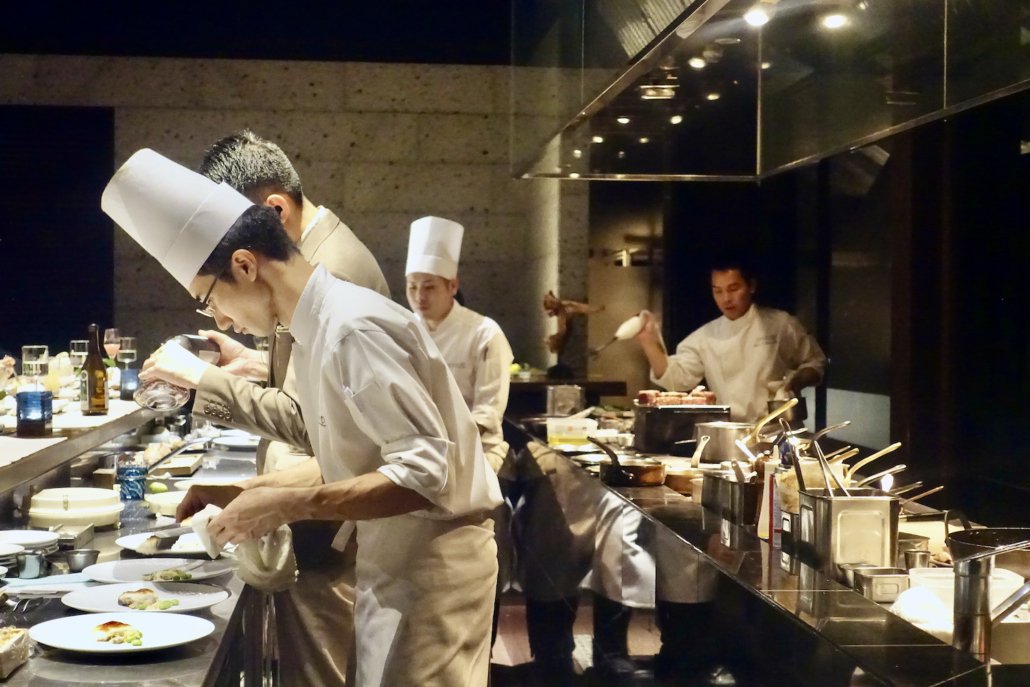
8.2. Japanese-Spanish cuisine
As luck would have it, my husband and I dined twice at Japanese chefs who are influenced by Spanish cuisine.
On the one hand, we had a truly memorable feast at the two-star Michelin Zurriola in Tokyo-Ginza.

Definitely go for counter seats if you want to watch how culinary magic is unfolding in front of your eyes!

The name from the restaurant comes from the Spanish San Sebastian coast, where the chef once lived.
On the other hand, there is also action to witness at the one-star Alarde in Osaka.

Here the chef grilles meat in his Asador style chargrilling station from the Spanish Basque country behind the counter. Other refined dishes from the Basque cuisine are available, too.
9. Other, more casual eateries in Japan
Of course, we did not eat solely at fine dining restaurants but also had the one or other lunch at a casual eatery. I was especially interested in tasting noodle and okonomiyki (Japanese pancake) dishes.
9.1. Noodle restaurants
Five of the more known types of noodles are the following: ramen (thin wheat, served in broth), soba (buckwheat; brown, dense, strong in flavor), udon (thick wheat; substantial, chewy, hot and cold), yakisoba (wheat, often fried) and somen (wheat; thin, similar to udon, often cold).
Out of the choice of noodle restaurants, we unfortunately only ate at a ramen and a soba place. While the former was unexceptional, I found the experience at a soba eatery, where you could watch the noodle production, a pleasant one. It is about Teuchisoba Ebisu Soba Noodle in Takayama.

9.2. Okonomiyaki restaurants
Okonomiyaki is the Japanese equivalent to a savory pancake. It consists of batter (wheat flour and eggs) and cabbage and you can add several more ingredients to your liking. This can be anything from meat or seafood to vegetables or cheese.
My husband and I went to Okonomiyaki Kiji in Osaka, awarded with a Michelin Bib Gourmand. And it was not only a culinary delight but also fun (the chef is a funny guy).

The chef prepares the pancakes behind the counter and brings it to the table equipped with an iron griddle (teppan).

Here you can cook it as long as it suits you.
Overall
The process of finding and reserving restaurants in Japan was stressful and time-consuming. But once everything fell into place, my husband and I had the most wonderful time. We made experiences which we never believed were possible. A whole new world of culinary possibilities was opened up to us. Furthermore, we got insights into food preparation and arrangement completely new to us. Hats off to chefs who have the courage to expose so much of their person and their craft of cooking – think of places where everything happens behind the counter where you are sitting!

What was before – what is next
This was the last post of a mini-series about luxury travel in Japan. I began with a three-week itinerary, followed by upscale hotels on the tour. Then I provided a guide how to find and reserve fine dining restaurants in Japan. Finally, I have just let you know what Japanese eateries to choose as a gourmet when following the route suggested. And for a short overview, keep my Google Map of Japan in mind complete with activities, hotels and restaurants!
And to entice you even more into visiting Japan, there will be two more blogpost about this country. One covers a stay at a luxury ryokan, Madoka no Mori in Hakone, the other is about two lesser-travelled spots in the land of the rising sun, Kiso Valley

and Yakushima Island.
Date of visit: November 2019
Pin it for later

The post My Google RESTAURANT Map of Japanese journey in style first appeared on Swiss Traveler






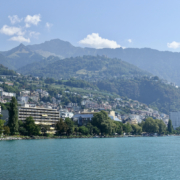



Leave a Reply
Want to join the discussion?Feel free to contribute!